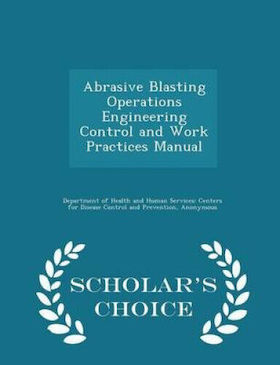
Curated with aloha by
Ted Mooney, P.E. RET

The authoritative public forum
for Metal Finishing 1989-2025

-----
Sand blasting standards: Swedish SA 1, SA 2, SA 2.5, SA 3 vs. NACE and Ra
Q. Is it possible to achieve surface roughness 6.3 Ra from initial surface roughness 12.5 Ra by grit blasting with SA1 or SA1-1/2? Material forged steel.
Abdullah Ansariwind energy - Pune, Maharashtra, India
December 31, 2011
A. Are you sure you are talking Ra? I don't think you can achieve those results using any blasting media.

AF Kenton
retired business owner - Hatboro, Pennsylvania
January 19, 2012
Q. For example: machined surface roughness Ra 12, can we blast it to SA 2.1/2 and achieve surface roughness 6.3 Ra?
Abdullah Ansari [returning]wind energy - Pune, Maharashtra, India
February 1, 2012
A. Hi, Abdulah. I think AF (Tony) told you "no". To the best of my knowledge, blasting is for cleaning (removing surface contaminants), and I have personally never heard of anyone attempting to polish an article by blasting, so I think he's right.
Regards,

Ted Mooney, P.E.
Striving to live Aloha
finishing.com - Pine Beach, New Jersey
February 2, 2012
P.S. Jan. 2015: Upon re-examination, Abdullah is talking about 6.3 microns not 6.3 microinches; this is not "polishing" and probably is achievable by blasting in some fashion; but I do not have the necessary experience to answer the question of whether or not it is practical to simultaneously blast forged steel to Ra 6.3 microns and Sa 2.5.
Q. What is the size and specification of SA2.5 iron grit?
Ashok Kumar- India
January 25, 2012
A. Dear Mr. Ashok Kumar,
Sa 2.5 is a surface cleanliness level. So how can know grit size?
Regards
Sohail Hashmi
- Karachi, Pakistan
February 17, 2012
Q. 1.What is the max.percentage of humidity to conduct sand blasting of steel structures?
2.How to measure the profiles SA2,SA2.5 & SA3 at site?
Please help me by answering these questions
- Vishakhapatnam,AP, India
April 13, 2012
Q. Dear Sir,
What is the specification grade for normal surface cleaning by hand before painting?
- Calicut,Kerala, India
May 8, 2012
Q. How can we convert Sa 2.5 to millimeters?
sunilantonyt- thrissur, kerala, India
July 10, 2012
July 10, 2012
Patron: "Waiter, my strawberries & cream have mud in them! Did you wash them?"
Waiter: "No problem sir, we can re-slice the berries smaller if the chunks are too large for your taste".
A. Hi cousin Sunilantonyt --
Please start at the top of this page and read it slowly and patiently to understand that Sa 2.5 is a visual standard for cleanliness, like the patron is talking about. It is not a measurement of surface profile like the waiter is talking about -- and no conversion between the two is possible. Good luck.
Regards,

Ted Mooney, P.E.
Striving to live Aloha
finishing.com - Pine Beach, New Jersey
Q. Could you tell the difference between rust grades A and B blasted to Sa3?
Almer G.- philippines
August 21, 2012
Q. What is the meaning of "Degrease" according to SSPC SP1, and Profile 75, Profile 75µm
Javeed Akhlaque- Pakistan
October 16, 2012
Q. I want clear Visual Photo or Reference of Sa 1 to Sa 3 value after Shot Blasting on HR Sheet (thickness 8-10 mm).
ARIJIT DAS- Jamshedpur, Jharkhand
August 11, 2013
A. Hi Arijit. Please carefully read the page. I already answered that question on October 21, 2012: "HMG Paints Ltd. offers a free 24-page PDF with pictures of these surfaces at: https://www.hmgpaint.com/knowledge-base/pdf/KNB0026.pdf". Good luck.
Regards,

Ted Mooney, P.E.
Striving to live Aloha
finishing.com - Pine Beach, New Jersey
July 2013
Q. Sir,
What surface profile is for Sa 2.5 sand blasting?
- AbuDhabi, UAE
August 25, 2013
A. Hi Boby. Perhaps we continue to misunderstand each other's words and phrases, but many people have tried to make it clear that Sa 2.5 is a visual standard for cleanliness and it has nothing to do with surface profiles, which are measures of roughness not cleanliness.
Regards,

Ted Mooney, P.E.
Striving to live Aloha
finishing.com - Pine Beach, New Jersey
August 2013
Q. As per customer, requirement is sa2.5 -- but we did sa3. Is there any problem?
thiruppathi manikandanoil field services - hidd, manama,bahrain
September 12, 2013
A. Hi Thiruppathi. I'm not an expert in this subject, but I can't imagine how it could be a problem. It sounds to me like you've simply removed any doubt that the surface is clean enough to comply with Sa2.5. Good luck.
Regards,

Ted Mooney, P.E.
Striving to live Aloha
finishing.com - Pine Beach, New Jersey
September 2013
Q. BOOK OR STANDARD SUPPLIER FOR VIEWING THE PICTORIAL VIEWS
OF SURFACE FINISH OF STEEL AFTER GRIT BLASTING AS PER IS:9954 [linked by ed. to archive.org]. A PICTORIAL REPRESENTATION AS PER IS 9954 for CONFIRMING THE THE FINISH OF SURFACE PREPARATION OF SA 2.5 THE SUPPLIER IN INDIA, PlEASE GIVE THE NAME
Manufacturer of LPG Cylinders - Delhi, India
October 15, 2013
A. Hi Shriram. This is available for Rs 130 from Jain Book Agency at www.jainbookagency.com/newdetails.aspx?id=110891
Good luck.
Regards,

Ted Mooney, P.E.
Striving to live Aloha
finishing.com - Pine Beach, New Jersey
October 16, 2013
February 24, 2014
Q. Dear sirs,
What is the full form of Sa In Swedish Blasting standard?
My answer was degree of cleanliness in an interview. But interviewer was not satisfied with my answer. The interviewer was From United States in SADARA project at Jubail in Saudi Arabia. So please send answer as soon as you can.
- Dammam, Saudi Arabia
A. Hi Birendra. Some have said Sa stands for "standard abrasive", others say it stands for "sand", and others claim the "S" stands for Swedish; I say you can't translate abbreviations between languages in the first place :-)
But perhaps the interviewer's problem with your answer is that "degree of cleanliness" may not have quite conveyed the nature of ISO-8501-1 and the ratings like Sa 1, Sa 2, Sa 2.5 and Sa 3 that are associated with it. I think the main point, which is made several times in this thread, is that it is a standard which includes 24 photographs and is a guide for "Visual assessment of surface cleanliness". Please download the short free booklet from HMG Paints that was previously mentioned and I think you will understand it thoroughly. Good luck.
Regards,

Ted Mooney, P.E.
Striving to live Aloha
finishing.com - Pine Beach, New Jersey
February 2014
A. SA:Sweden Airblast
ST:Sweden Tool
- Medicine Hat, Alberta, Canada
May 13, 2014
Q. Dear sir,
I want to know about the Swedish standard SA-2.5, i.e., to check surface roughness in microns.
With regards
Rohan

Rohan jena
- Odisha, India
July 29, 2014
A. Hi cousin Rohan. Please study this thread and you will learn that your question isn't quite properly formed -- because SA-2.5 has nothing to do with microns or surface roughness. Good luck.
Regards,

Ted Mooney, P.E.
Striving to live Aloha
finishing.com - Pine Beach, New Jersey
July 2014
|
|
October 8, 2014
- Mumbai, Maharashtra, India Thanks Matt. I have the world's best job: I receive & post people's questions & answers from my own home on my own schedule; I can interject my personal opinions at my leisure, and I'm free to google around whenever I find anything interesting -- and get paid for it all through advertising revenue. Yes, I sometimes have to deal with repetition -- but that's a very small price to pay for not having to deal with the much harder stuff that most workers face :-) I do wish I could save the faster learners from the boredom of repeated answers, but since I haven't figured out how to do that yet, all I can do is try my best to make the site a fun & pleasant place to visit. Thanks again! Regards,  Ted Mooney, P.E. Striving to live Aloha finishing.com - Pine Beach, New Jersey October 2014 |
Q. Dear Sir,
I read the entire communication on this page since from the beginning ...
It is clearly mentioned that "Surface roughness" cannot be the outcome of blasting process and it isn't measurable also - NO standard calls...
But I observed one table for standards of surface preparation for steel in which ISO 8503-1 calls for surface roughness characteristics of blast-cleaned surface..
Anyone can assist me in getting more details in the same?
- Pune, India
January 10, 2015
January 2015
![]() Hi cousin Adik. Thanks for your patience in reading the whole thing.
Hi cousin Adik. Thanks for your patience in reading the whole thing.
Unfortunately I do not have all of the standards that people mention on this site, but ISO 8503-1, which you are talking about, is not the ISO 8501 that other people were talking about. ISO 8501-1 is the "visual standards for cleanliness", and this cannot be equated to surface roughness because it is a visual standard for cleanliness and not a roughness standard. We gave an analogous example that strawberries can be clean or dirty irrespective of the size of the slices.
ISO 8503 appears to be "surface roughness" standards, not visual cleanliness standards.
I don't believe that anyone said that surface roughness "cannot be the outcome of a blasting process and it isn't measurable". The whole point of ISO 8503-1 seems to be that it can be the outcome of blasting and it is measurable. Anthony Kenton and myself did express the opinion that it was probably not practical to achieve an Ra 6.3 polish by blasting, but I think I may have been too hasty :-(
I, and probably Mr. Kenton, was thinking in microinches instead of microns, but upon re-examination microns was probably intended and Ra 6.3 microns is probably doable by blasting -- which is not to say that Abdullah Ansari will necessarily be able to achieve what he wants; I don't know :-)
Regards,

Ted Mooney, P.E.
Striving to live Aloha
finishing.com - Pine Beach, New Jersey
Q. I want to know if it is necessary to measure temperature & humidity of surface which is to be sand blasted.
Yogesh Bhujbal- Satara, Maharashtra, India
February 25, 2015
February 2015
![]() Hi Yogesh. I hope some reader fully understands the context of your question because it is too abstract for me. If you are a local weld shop offering to clean up a customer's old lawn mower, the answer is no. If a specification you are processing to requires it, the answer is of course yes. If you are an aerospace shop involved in processing airliner components, the answer is possibly yes.
Hi Yogesh. I hope some reader fully understands the context of your question because it is too abstract for me. If you are a local weld shop offering to clean up a customer's old lawn mower, the answer is no. If a specification you are processing to requires it, the answer is of course yes. If you are an aerospace shop involved in processing airliner components, the answer is possibly yes.
Regards,

Ted Mooney, P.E.
Striving to live Aloha
finishing.com - Pine Beach, New Jersey
A. To add to Ted's answer. We also need to know what materials you are working with. You should also be aware that oxidation is always a problem which is caused by temperature and humidity.

AF Kenton
retired business owner - Hatboro, Pennsylvania
March 3, 2015
Q. What is the blasting type for the interior of an existing petroleum storage tank that's been unused for some period. Note. It has been blasted and primed before use. Now a little pore of corrosion exists. Thanks
UKUTAIRE LoveaceLot aura international limited - ETHIOOE west, Delta state, Nigeria
May 30, 2018
Q, A, or Comment on THIS thread -or- Start a NEW Thread
